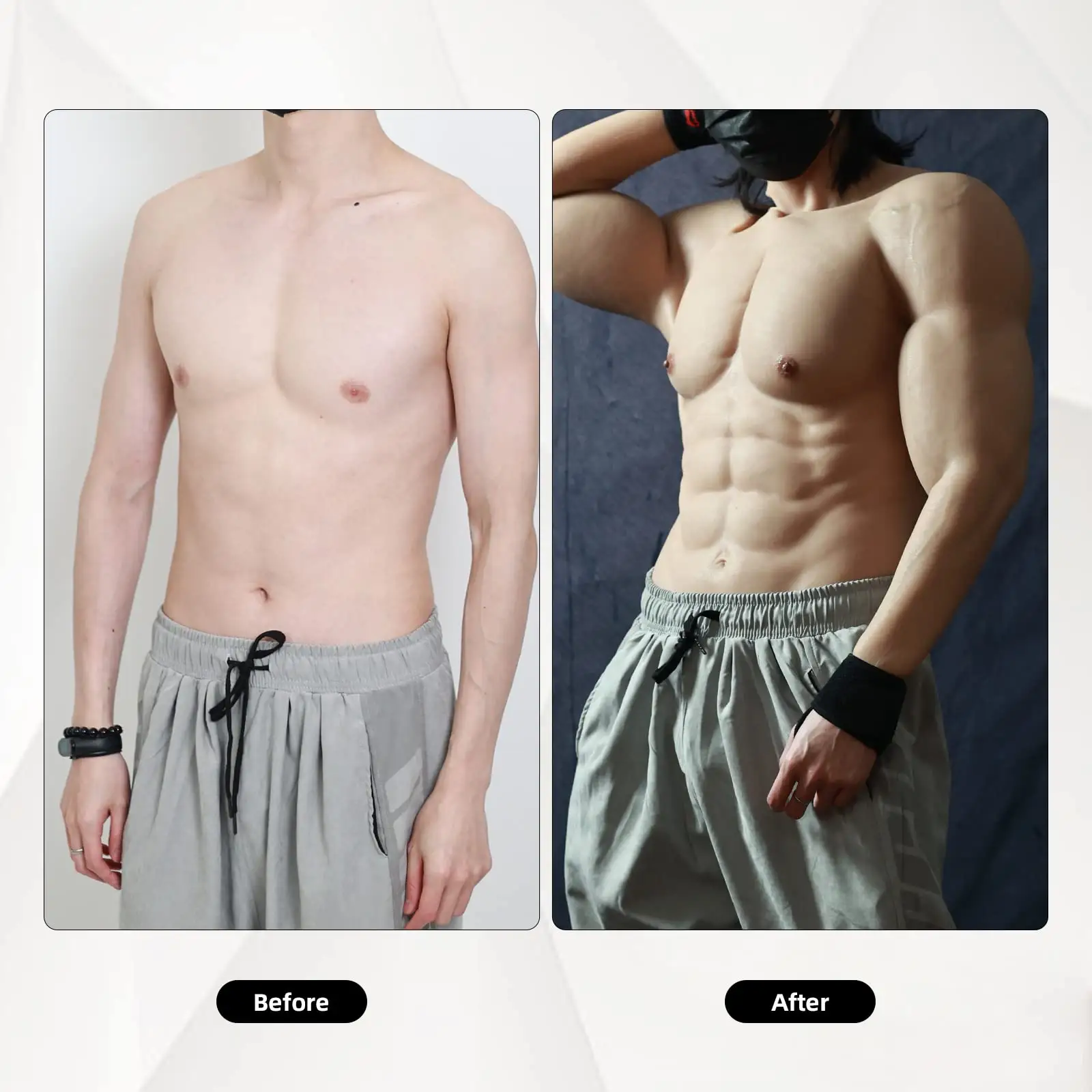Artificial Silicone Muscle Chest With Arms
Production Specification
| Name | Silicone muscle suit |
| Province | zhejiang |
| City | yiwu |
| Brand | ruineng |
| number | Y22 |
| Material | Silicone |
| packing | Opp bag,box,according to your requirements |
| color | six colors |
| MOQ | 1pcs |
| Delivery | 5-7days |
| Size | S, L |
| Weight | 4kg,6kg |
How to clean the silicone buttock

Creating silicone muscle models can be an exciting and rewarding project, whether for educational purposes, artistic endeavors, or even special effects in film. Here’s a step-by-step guide on how to make silicone muscle that will help you achieve realistic results.
Required materials
- Silicone Rubber: Choose the right quality silicone rubber for your project. There are several types to choose from, including tin-cured and platinum-cured silicone.
- Molds: You can make your own molds using clay or purchase pre-made molds.
- Color Pigments: Silicone pigments can be added for realistic skin tones.
- Release Agent: This will help remove the silicone from the mold without damaging it.
- Mixing Tool: Use a cup and stick to mix silicone and paint.


Step by step process
- Design your muscle model: Start by drawing or designing the muscle structure you want to replicate. This will guide you in creating the mold.
- Create the Mold: If you are making your own mold, use clay to sculpt the muscle shape. Once you’re satisfied, apply a release agent to ensure easy silicone removal later.
- Mixing the Silicone: Mix the silicone according to the manufacturer’s instructions. If you want to add color, add paint at this stage. Mix thoroughly to ensure uniform color.
- Pour silicone: Carefully pour the mixed silicone into the mold. Gently tap the sides to release any remaining air bubbles.
- Cure Silicone: Follow the instructions and allow the silicone to cure. This usually takes anywhere from a few hours to a day, depending on the type of silicone used.
- De-mold: After curing, gently remove the silicone muscle from the mold. Be careful to avoid tearing.
- Final Touches: You can add extra details or textures to enhance the realism. Consider using silicone paint to add depth.
Conclusion
Making silicone muscle models can be a fun and educational experience. With the right materials and techniques, you can create lifelike representations that serve various purposes. Whether for art, education, or special effects, mastering this skill opens up a world of creative possibilities. Happy crafting!

Company information

Q&A



















